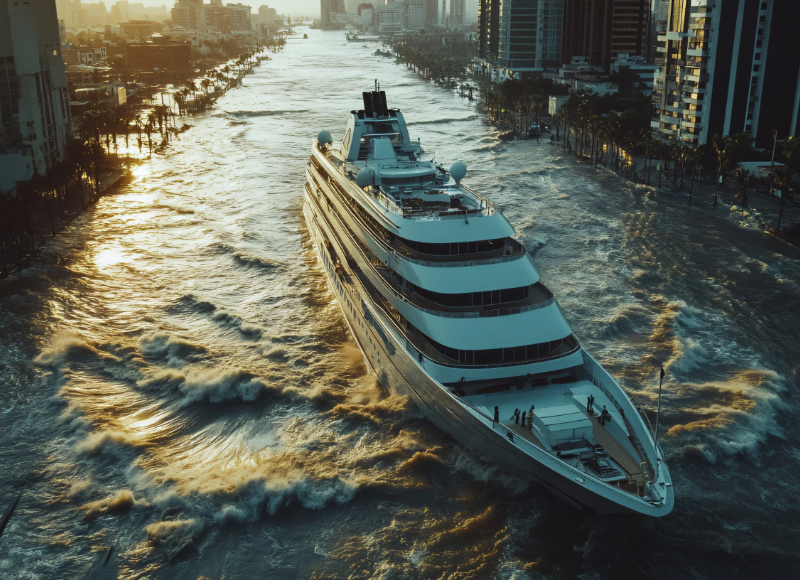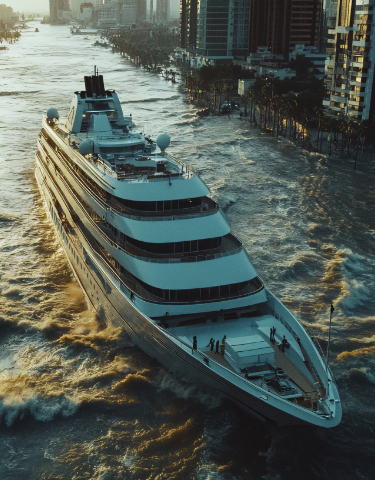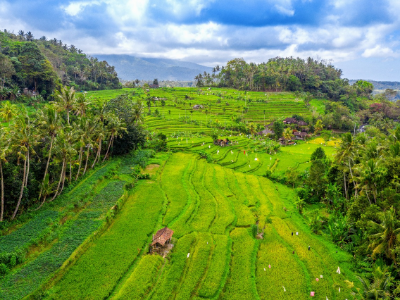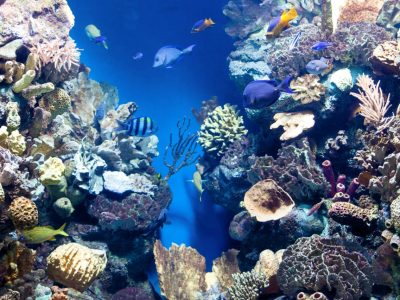India’s ambitious inland waterways development programme represents one of the most significant transportation infrastructure initiatives in recent history. With an investment of Rs. 6,434 crores allocated between 2014-2024 and cargo movement increasing from 18 million tons per annum in 2013-14 to 133 million tons in 2023-24, the country has declared 111 National Waterways under the National Waterways Act, 2016. However, this rapid expansion brings multifaceted risks that demand sophisticated management strategies. Drawing from the Institute of Risk Management (IRM) frameworks and international best practices, this comprehensive analysis explores the critical risk management strategies essential for India’s inland waterways development. [1]
Understanding the Risk Landscape
Inland waterways development in India presents a complex risk environment encompassing technical, environmental, social, economic, and governance challenges.
Primary Risk Categories
Technical Risks – India’s rivers suffer from inadequate depth and high siltation, especially in northern regions, necessitating extensive dredging operations. The absence of modern terminals and maintenance facilities impacts operational efficiency significantly. Technical barriers include low vertical clearance from bridges and lack of night navigation facilities. [2]
Environmental and Climate Risks – Dredging activities have severe environmental implications, including riverbed damage and harm to aquatic life. The National Green Tribunal has raised concerns about environmental risks in ecologically sensitive regions like Assam, causing project delays. Climate change further compounds these challenges, with extreme floods and dry periods becoming more frequent. Inland waterway transport is particularly vulnerable because river navigation depends on precipitation, and progressive climate change manifests as seasonal variations in water discharge. [3]
Social Risks emerge from displacement of riverine communities. An estimated 15,000 to 20,000 families across India’s major waterways could lose their homes and livelihoods, with ripple effects on over 100,000 people whose survival is directly tied to traditional river economies. The collapse of the informal river transport economy threatens over 25,000 boatmen, small ferry operators, and cargo handlers. [4]
Regulatory Risks stem from complex jurisdictional frameworks. The sector faces regulatory complexities and overlapping jurisdictions between multiple authorities such as the Central Inland Water Corporation, state governments, and port authorities. This fragmentation slows decision-making and impedes policy implementation. [5]
IRM-Based Risk Management Framework
The IRM framework emphasizes that effective risk management must be collaborative, informed by the best available information and expertise, and integral to all organizational activities. For India’s inland waterways development, this translates into a five-pillar strategic framework.
Risk Identification and Assessment
Risk Identification must encompass all potential threats using structured methodologies. The IRM framework recommends systematic approaches including risk assessment checklists, SWOT analysis, and root cause analysis. For inland waterways, this involves evaluating hydromorphological pressures, socio-economic impacts, and technological constraints across each waterway segment. [6]
Risk Assessment enables prioritization of mitigation efforts. Using probability-consequence matrices and Monte Carlo risk analysis, project managers can assign numerical values to risks, providing precise analysis of potential consequences. This becomes particularly important for evaluating dredging requirements, where costs and environmental impacts must be balanced against navigation benefits. [7] Research indicates that waterway development works can have significant impacts on ecological value and water quality, with effects spreading upstream and downstream over many years. Early environmental risk assessment must cover all hydromorphological pressures, including dredging impacts, bank reconstruction, and permanent changes to water levels and flows. [8]
Risk Mitigation Strategies
Following IRM principles of selecting, designing and implementing risk treatment options that support achievement of intended outcomes, infrastructure must be designed for environmental risk mitigation and resilience. Adaptive Infrastructure Design includes designing fairways that can accommodate seasonal water level variations thereby addressing technical and climate risks. Good Navigation Status standards must be implemented to ensure uninterrupted operations throughout the year. [9]
The Organisation for Economic Co-operation and Development (OECD) framework emphasizes that careful design can often mitigate impacts, requiring early consultation with environmental stakeholders. Strategic planning at river basin level that integrates economic, social, and environmental considerations becomes essential. This includes implementing measures to minimize ecological damage while maintaining navigation functionality. [10]
Social Risk mitigation requires comprehensive stakeholder engagement and displacement management. The IRM framework emphasizes collaborative risk management, necessitating early and continuous consultation with affected communities.
Risk Monitoring and Communication
The IRM framework requires integrated, insightful and informative risk monitoring that enables proactive risk management. Integrated Risk Monitoring establishes key risk indicators (KRIs) that provide early warning of potential risk events. For inland waterways, water management would involve monitoring water levels, sediment accumulation rates, environmental parameters, and community satisfaction indices. [11]
Stakeholder Communication ensures transparent information sharing throughout project lifecycle. The masterplan digitalization framework emphasizes that shippers and workers from the work floor must be heard. This requires establishing multiple communication channels, from policy-focused reference groups to grassroots community consultations. [12]
The IRM framework mandates timely, accurate and useful risk reporting enabling continuous improvement through learning and experience and enhanced decision-making quality. For inland waterways, effective operational risk management includes regular progress reports on environmental parameters, community impact indicators, and operational performance metrics. [13]
Strategy and Governance Integration
The IRM framework emphasizes that risk management must be an integral part of all organizational activities to support decision-making in achieving objectives. For inland waterways, this means integrating environmental impact assessments, community displacement considerations, and climate resilience factors into project planning from inception. [14]
Multi-Stakeholder Governance becomes critical given the complex institutional landscape. This requires establishing clear coordination mechanisms between the Inland Waterways Authority of India (IWAI), state governments, environmental authorities, and community representatives. [15]
Environmental, Social, and Governance (ESG) Integration
Modern infrastructure development increasingly incorporates ESG principles, which provide a comprehensive framework examining organizational impacts on environment, stakeholder treatment, and governance structure quality.
Environmental Stewardship
Research shows that extreme events become more frequent while progressive change manifests as seasonal changes in water discharge. Climate Resilience Planning and ESG risk management involves adaptation that requires sound knowledge bases and action at fleet, logistics, and infrastructure levels. This includes designing infrastructure that can accommodate both flood and drought conditions. [16]
Ecosystem Protection requires balancing navigation needs with biodiversity conservation. The multi-functional role of waterway authorities involves creating valuable habitats through navigation works where possible and implementing comprehensive environmental monitoring programs. [17]
Pollution Control addresses water quality impacts from construction and operations. ESG frameworks emphasize utilizing cleaner technologies and implementing stringent emission regulations. For inland waterways, this includes proper management of dredged materials, implementation of ballast water treatment systems, and adoption of cleaner vessel technologies. [18]
Social Responsibility
International experience shows that all conflicts identified stem from failure to involve environmental stakeholders early enough in project planning, leading to expensive procedures and lengthy delays. Early consultation and cooperative solution-finding becomes essential for project success. [19]
Displacement Management requires comprehensive rehabilitation policies. Unlike highways or ports, there is currently no clear compensation or rehabilitation policy for communities displaced by inland waterway projects. Developing river livelihood protection funds and ensuring legal obligations for resettlement becomes critical for social sustainability. [20]
Cultural Heritage Protection requires careful planning around religious sites, traditional practices, and cultural access points. The development challenge involves preserving rivers’ soul as revered mothers and lifelines owing to their sacred and cultural significance while enabling economic development. [21]
Governance Excellence
Transparency and accountability ensures public trust in development processes. ESG governance principles emphasize transparent financial reporting, ethical decision-making, and effective corporate governance structures. For inland waterways, this includes open reporting on project progress, expenditure, and impact metrics. [22]
Effective governance requires streamlining coordination between central ministries, state governments, and local authorities to eliminate regulatory complexities that currently slow decision-making. [23]
Stakeholder rights protection ensures equitable treatment of all affected parties. This includes protecting informal sector workers’ rights, ensuring fair compensation for displaced communities, and maintaining public access to traditional river uses.
Technology and Innovation Integration
The IRM framework emphasizes technology integration as a key component of effective risk management.
Digital Risk Management Systems
Real-time Monitoring Platforms enable continuous tracking of critical parameters. Implementing comprehensive monitoring systems for water levels, weather conditions, and vessel movements enables proactive risk management and creates new business opportunities while enhancing safety and efficiency. [24]
Predictive Analytics helps anticipate and prevent risk events. Using artificial intelligence and machine learning technologies, waterway authorities can predict seasonal variations, sediment accumulation patterns, and maintenance requirements. This enables proactive interventions that prevent service disruptions.
Integrated Communication Systems facilitate stakeholder coordination. Digital platforms can enable real-time communication between project authorities, local communities, environmental agencies, and vessel operators, ensuring rapid response to emerging risks.
Innovation in Construction and Operations
Advanced Sustainable Dredging Technologies can reduce ecosystem disruption and improve sediment management efficiency.
Modular Infrastructure Design enables adaptive responses to changing conditions. Using modular jetty and terminal designs allows for easier modifications as water levels change or traffic patterns evolve.
Green Vessel Technologies such as electric and hybrid vessel technologies reduces emissions and supports India’s broader environmental commitments.
Financial Risk Management
Waterways development requires substantial capital investments with long payback periods, making financial risk management crucial for project sustainability.
Funding Diversification
Public-Private Partnerships can transfer construction and operational risks while accessing private sector expertise. The National Waterways (Construction of Jetties/Terminals) Regulations, 2025 opens opportunities for private investment, but requires careful structuring to ensure public interest protection. [25]
International Financing provides access to specialized expertise and risk-sharing mechanisms. Multilateral development banks often provide technical assistance alongside funding, helping implement international best practices in risk management.
Performance-Based Contracting aligns contractor incentives with project outcomes. Using output-based contracts transfers construction and performance risks to parties best equipped to manage them.
Cost Control Mechanisms
Contingency Planning – Establishing realistic contingency reserves based on comprehensive risk assessments helps manage unexpected expenses.
Value Engineering – Regular value engineering exercises ensure that projects deliver maximum benefit for invested resources while maintaining safety and environmental standards.
Life-Cycle Cost Analysis – This approach considers long-term operational and maintenance costs and helps identify design options that minimize total ownership costs over project lifecycles.
Recommendations for Implementation
Based on IRM frameworks and international best practices, several key recommendations emerge for strengthening risk management in India’s inland waterways development.
Institutional Strengthening
Establish Integrated Risk Management Units within Inland Waterways Authority of India (IWAI) and state waterway authorities. These units should include multidisciplinary expertise covering engineering, environmental science, social development, and risk management.
Develop National Risk Management Standards specific to inland waterways development. These standards should incorporate IRM principles while addressing India’s unique geographical and social contexts.
Create Inter-Agency Coordination Mechanisms to address jurisdictional complexities. Regular coordination meetings and shared information systems can improve decision-making efficiency.
Capacity Building
Professional Risk Management Training for project managers and technical staff. Collaboration with IRM India and other professional bodies can ensure access to international best practices.
Community Capacity Building enables local stakeholders to participate effectively in risk management processes. Training programs for community representatives enhance the quality of stakeholder engagement.
Technical Skill Development in specialized areas such as environmental impact assessment, social impact evaluation, and climate risk analysis.
Policy Framework Enhancement
Comprehensive Rehabilitation Policy for displaced communities must be developed and implemented. This policy should address both formal and informal sector impacts with adequate compensation and livelihood restoration measures.
Environmental Compliance Framework – Single-window clearance mechanisms to streamline approval processes and reduce delays.
Climate Adaptation Strategy should be integrated into all waterway development planning. This includes designing infrastructure for future climate scenarios and developing adaptive management protocols.
Conclusion
India’s inland waterways development represents a transformative opportunity to create sustainable, efficient transportation infrastructure while supporting economic growth and environmental protection.
The Institute of Risk Management framework provides valuable guidance for addressing the complex technical, environmental, and social risks inherent in waterway development by developing risk management approaches that integrate risk assessment, response, monitoring, communication, and strategy components. When combined with ESG principles and technological innovation, these frameworks can help ensure that India’s waterways development achieves its ambitious goals while protecting community interests and environmental resources.
The 200 million MT cargo target by 2030 and 500 million MT by 2047 are achievable, but only through diligent application of proven risk management principles adapted to India’s unique context. [26]
The path forward demands collaboration between government agencies, private sector partners, international experts, and local communities. By embracing integrated risk management approaches and maintaining focus on sustainable development principles, India can build an inland waterways system that serves as a model for other developing nations while becoming the backbone of sustainable transportation infrastructure that the nation needs for its continued development and prosperity.















